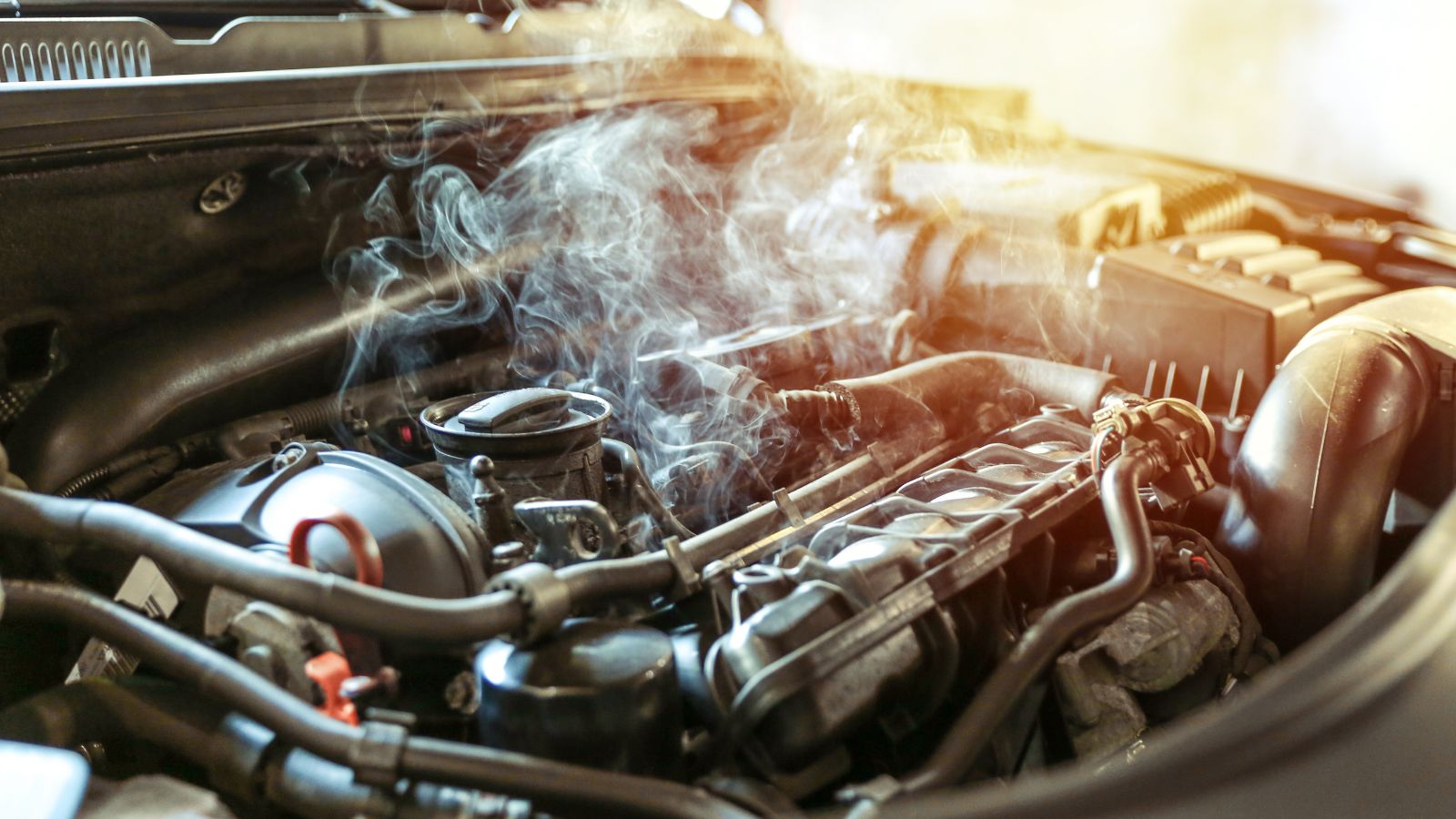Adding coolants is necessary to avoid overheating of car engines. Suppose your engine is overheated or runs out of coolants. Will you add some coolant in an instant? If not, then how long to wait before adding coolant to hot engine?
You need to wait for at least 30 minutes to let the engine cool down. Give it enough time, like one to two hours, for even better results. Otherwise, there may be cracks in the engine block, leakages in radiator pipes, or sometimes an attempt to blow the engine.
However, the cooling time can be affected by the insulation system, ambient temperature, or engine head materials. So, read along to know about these factors and what you should do in such situations.
Table of contents
What Are the Factors Affecting Cooling Time?
Sometimes the cooling time may vary from its average results because of some crucial factors. Your engine may cool down quickly or late because of these reasons. Let’s show you a brief discussion regarding these facts.
1. Ambient Temperature
It’s also known as the room temperature or the temperature where you’re at that moment. Suppose you are in traffic at midday in summer and your car engine has run out of coolant. It needs to cool down before you add some of them.
Trust us; your engine won’t cool down in 30 or 40 minutes. It will take about an hour or more than that to reach ambient temperature. And then you can add the coolants.
Again, imagine the same situation in winter or at your garage when you have just reached home. Your engine will be relaxed in 20 to 30 minutes, and you can prepare it by adding some coolants for your next ride.
2. Heat Insulation System
This system also plays a massive role in engine cooling periods. If your engine has a ceramic thermal shield, it won’t get heated so quickly.
The foam reinforced heat shield will also give your engine enough protection for not getting heated easily. Even if the machine runs out of coolant and you need to add more, the heat insulation system of the foam shield will be able to release the heat quickly.
Therefore, you have to ensure that your car’s engine has a decent heat insulation system.
3. Amount of Remaining Coolant
Typically, you need to refill the coolant tank when the coolants run out, or a little is left, and your car is heated enough.
When the radiator tank is empty, the engine will take more time than usual to cool down. But if there’s some coolant left in the tank and you want to add more before it gets empty, you can wait for 30 to 40 minutes on average and let the engine cool.
4. How Much the Engine Is Heated
Sometimes the engine gets more heated due to bad weather, rough roads, insufficient or inadequate coolants, gear problems, etcetera.
Weather conditions are a potential reason for the excess heated engine. But if you use poor quality coolants, your engine will get more agitated, and it will take more time to cool before adding some coolant or water.
When you drive on rough roads, your car engine undergoes harsh conditions and gets heated more than usual.
5. Materials of Engine Head
If the engine head is made of inferior materials like cast iron, low-quality aluminum, it will be heated quickly.
Sometimes you buy cars at a cheaper rate, but the materials you get inside the vehicle are also more affordable. So, it’s possible that your engine gets heated without any suspicious reasons and doesn’t cool down for hours. The low quality of cast iron is the main culprit behind it.
Steel is better than low cast iron but still at a lower level compared to the aluminum block. They can radiate heat quicker than steel blocks.
How long to wait before adding coolant to hot engine
On average, a car engine can be at room temperature in 30 minutes. Then, you can open the radiator cap safely. But experts suggest that you should let your motor sit idle for one or two hours if you aren’t in a hurry.
It’s best to give it three to four hours of idle time to cool down completely. A bit awful, right?
Well, it’s because the oil residues need time to remove heat. The average time mainly indicates when the coolant or the radiator tank has stopped getting warm. After that, it needs to adjust to the room temperature, and it’s a slow process. But you can add coolant after the average time or when the radiator cap is at room temperature.
Do your best and wait until the perfect time has come if you aren’t in a hurry or stuck in the middle of traffic.
Why should you wait before adding coolant to hot engine
After learning you have to be patient and wait to cool the engine before adding coolant, you may be wondering why you should wait and what could go wrong in such situations.
Well, if you don’t do so, you may have to face the following troubles for your impatient action.
1. Engine Block Can Crack
If you add more coolant while the engine is still hot, it may break the engine manifolds due to thermal expansion or contraction.
Typically, when you add some cooling materials in hot metal, it will shrink, and the internal structure will tend to demolish.
2. Coolant May Overflow
As you know, the coolant is made of an equal ratio of anti-freezers and water. Ethylene glycol is the main ingredient that tends to expand in vapor form.
So, if you add new coolants over it, they will vaporize quickly, flow out of the tank, and spread all over the engine manifolds.
3. Hot Vapor Is Harmful
The vapor of anti-freezers is harmful to humans and children. The hot steam may burn your skin when you try to open the radiator cap. Also, the toxic vapor will create irritation to your skin, eyes, and nostrils.
That’s why it’s better to avoid the vapor while opening the cap or adding the coolants.
4. Blow Up the Engine
You may think it’s funny because of how some coolant can blow up the engine. Well, it’s possible when the engine is scorching, and you just add some coolant immediately. The metal engine will tend to blow up or crack open.
5. Leakages in Radiator Pipes
The reason beyond leaking radiator pipes is thermal expansion and shrinkage tendency. When the coolants are about to go through the pipelines, the temperature difference will cause thermal cracking, and the channels will have leakages.
So, the pipes won’t be able to function further, and you need to replace them immediately.
What to Do While the Engine is Cooling Down?
If your coolant has run out in the middle of a journey, you need to wait until the engine becomes cool and then add some coolant. Make sure you give the machine enough time for that.
You can check with your palm whether the engine temperature has adjusted or not. If you are confident about the engine, you can refill the radiator tank.
Another critical matter is coolant quality. So, use a good quality coolant when the engine is not hot and see the result yourself.
FAQs
Do coolants and antifreeze do the same work?
They do the same work, but you can’t use only anti-freezers in the engine. Mainly, it’s an ingredient of a coolant mixture. As anti-freezers have a significantly lower freezing point, it’s mixed with water in an equal ratio and then applied as a coolant.
What’s better between coolant and water for car engines?
Coolants are better than water when it comes to car engines. Though it’s a popular option as a fluid for cooling, it can cause damages and corrosion to engine parts. That’s why the mixture of water and anti-freezers is added with the coolant in the engine.
Is it okay to overfill the coolant?
No, it’s not okay to overfill. The coolant components that are used in car engines are expandable in high temperatures. If you overfill the coolant, it will expand when the engine is hot and may crack or damage the radiator and engine block.
How to check whether the radiator is full or not?
Some cars have coolant indicators at the front. But you can’t see it while pouring coolants. So, you have to open the radiator cap and see if the coolant level is one inch below or not.
Are coolants toxic?
Yes, the coolants are incredibly toxic. Especially when they are in vapor form, they may damage your skin, eyes, or burning sensation in the nostrils. Keep your children away from coolant vapor.
Bottom Line
For the safe and healthy life of your car, the engine needs to remain tip-top all the time. So, don’t do anything in a rush like adding coolant to a hot engine and damaging the engine deeply.
You should already know how long to wait before adding coolant to hot engine and your appropriate actions. Therefore, follow the guidelines and have a safe ride. Remember to care for your engine and the machine will serve you for a long time without any issues. Stay safe on the roads!
Related post:
- How to Get Spark Plug Out of Hole
- How Common Is CP4 Failure?
- How Long Does It Take To Replace Fuel Injectors? Let Us Teach You!
- How to Reset Transfer Case Control Module?

Thomas is a retired motor mechanic, father, and grandfather. He writes from his 20+ years in the automotive industry to help you find and solve anything related to car repairs, maintenance, and care.
